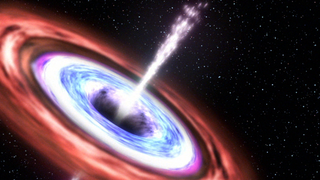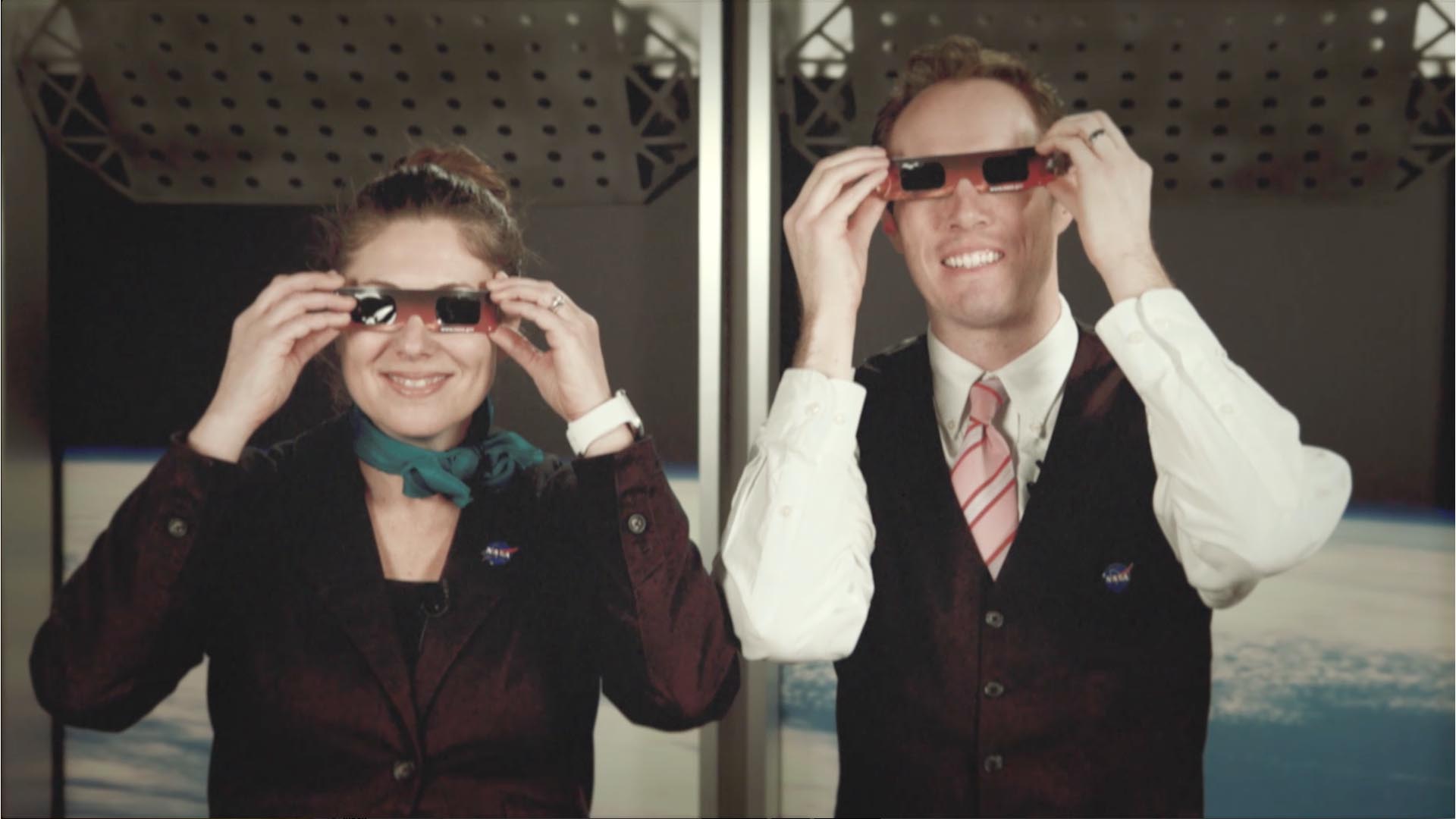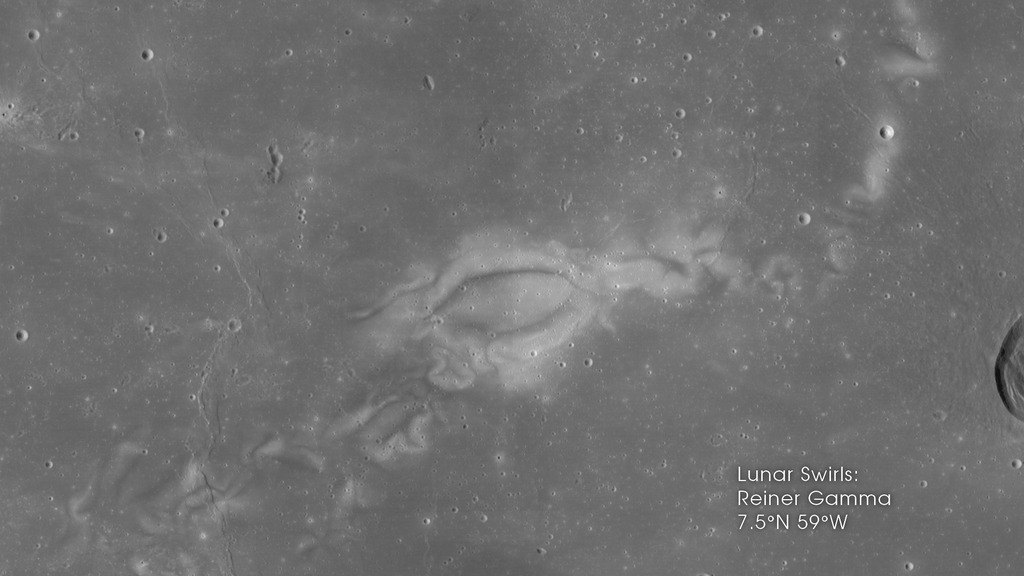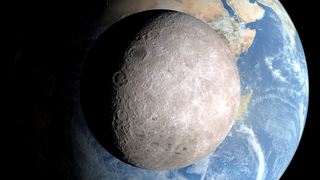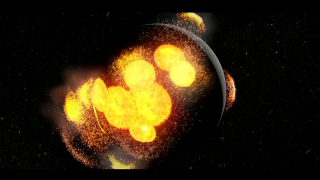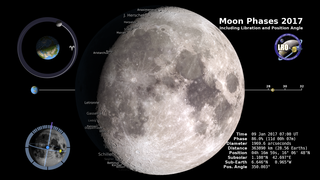LRO and Solar Eclipse Events
Overview
This page features videos for the 2017 Solar Eclipse Events being coordinated with the LRO Mission production team.
Main Playlist
The Moon and More
Go to this page"The Moon and More" - a music video starring musicians Javier Colon and Matt Cusson.Watch this video on the NASA Goddard YouTube channel. || Javier_and_Matt_Still_Image_print.jpg (1024x576) [132.7 KB] || Javier_and_Matt_Still_Image_searchweb.png (320x180) [96.2 KB] || Javier_and_Matt_Still_Image_web.png (320x180) [96.2 KB] || Javier_and_Matt_Still_Image_thm.png (80x40) [8.6 KB] || 12366_The_Moon_and_More_1920x1080HDProrez.mov (1920x1080) [2.8 GB] || 12366_The_Moon_and_More_1920x1080H264.mp4 (1920x1080) [279.5 MB] || 12366_The_Moon_and_More_FacebookVersionMaster.mp4 (1280x720) [325.3 MB] || 12366_The_Moon_and_More_MasterYouTube4K.mp4 (3840x2160) [1.0 GB] || 12366_The_Moon_and_More_4kUHDMASTEROriginal.mov (3840x2160) [11.3 GB] || Javier_and_Matt_Still_Image.tif (3840x2160) [65.7 MB] || The_Moon_and_More_Captions_Output.en_US.srt [1.8 KB] || The_Moon_and_More_Captions_Output.en_US.vtt [1.9 KB] || 12366_The_Moon_and_More_MasterYouTube4K.webm (3840x2160) [47.4 MB] ||
The Moon's Role in a Solar Eclipse
Go to this pageThis video explains how our moon creates a solar eclipse, why it's such a rare event to see, and how data from NASA's Lunar Reconnaissance Orbiter has enhanced our ability to map an eclipse's path of totality.Music Provided by Universal Production Music: “Bring Me Up” – Anders Gunnar Kampe & Henrik Lars Wikstrom.Watch this video on the NASA.gov Video YouTube channel. || MoonsRoleEclipseThumnail_print.jpg (1024x576) [40.9 KB] || LROSolarEclipse_Thumbnail.jpg (1080x1920) [491.4 KB] || MoonsRoleEclipseThumnail_searchweb.png (320x180) [34.1 KB] || MoonsRoleEclipseThumnail_thm.png (80x40) [4.4 KB] || 12648_MoonsRoleInASolarEclipse_Facebook.webm (1280x720) [21.0 MB] || MoonsRoleEclipseThumnail.tif (1920x1080) [7.9 MB] || 12648_MoonsRoleInASolarEclipse_Facebook.mp4 (1280x720) [219.1 MB] || 12648_MoonsRoleInASolarEclipse_YOUTUBE_1080.mp4 (1920x1080) [296.7 MB] || 12648_MoonsRoleInASolarEclipse_Captions.en_US.srt [3.7 KB] || 12648_MoonsRoleInASolarEclipse_Captions.en_US.vtt [3.7 KB] || 12648_MoonsRoleInASolarEclipse_MASTER.mov (1920x1080) [4.1 GB] ||
What determines when we have an eclipse?
Go to this pageMusic: Witch Waltz by Dorian KellyComplete transcript available.Watch this video on the NASA Goddard YouTube channel. || EclipsePlane_V7.00001_print.jpg (1024x576) [79.6 KB] || EclipsePlane_V7.00001_searchweb.png (320x180) [62.0 KB] || EclipsePlane_V7.00001_thm.png (80x40) [3.8 KB] || EclipsePlane_V7.mp4 (1920x1080) [63.0 MB] || EclipsePlane_V7_1.mp4 (1920x1080) [91.4 MB] || EclipsePlane_V7.webm (1920x1080) [5.7 MB] || EclipsePlane_V7.en_US.srt [499 bytes] || EclipsePlane_V7.en_US.vtt [511 bytes] || EclipsePlane_V7.mov (1920x1080) [1.6 GB] ||
Get Ready for the 2017 Solar Eclipse
Go to this pageMusic credit: Ascending Lanterns by Philip HochstrateWatch this video on the NASA Goddard YouTube channel.Complete transcript available. || promothumb.jpg (1920x1080) [115.5 KB] || promothumb_print.jpg (1024x576) [101.0 KB] || promothumb_searchweb.png (320x180) [79.9 KB] || promothumb_web.png (320x180) [79.9 KB] || promothumb_thm.png (80x40) [6.7 KB] || 12551_Eclipse_Promo_V3.540.AppleTV.H264.2997.mp4 (960x540) [16.7 MB] || 12551_Eclipse_Promo_V3.1080p.H264.2997.webm (1920x1080) [13.7 MB] || 12551_Eclipse_Promo_V3.1080p.H264.2997.mp4 (1920x1080) [336.1 MB] || 12551_Eclipse_Promo_2017_V2.en_US.srt [1.7 KB] || 12551_Eclipse_Promo_2017_V2.en_US.vtt [1.7 KB] || 12551_Eclipse_Promo_V3.4KAPR2997.webm (3840x2160) [14.9 MB] || 12551_Eclipse_Promo_V3.4K.H264.2997.mp4 (3840x2160) [122.0 MB] || 12551_Eclipse_Promo_V3.1080.APR5994.mov (1920x1080) [3.1 GB] || 12551_Eclipse_Promo_V3.4KAPR2997.mov (3840x2160) [6.1 GB] ||
Tracing the 2017 Solar Eclipse
Go to this pageWhen depicting an eclipse path, data visualizers have usually chosen to represent the moon's shadow as an oval. By bringing in a variety of NASA data sets, visualizer Ernie Wright has created a new and more accurate representation of the eclipse. For the first time, we are able to see that the moon's shadow is better represented as a polygon. This more complicated shape is based NASA's Lunar Reconnaissance Orbiter's view of the mountains and valleys that form the moon's jagged edge. By combining moon's terrain, heights of land forms on Earth, and the angle of the sun, Wright is able to show the eclipse path with the greatest accuracy to date. ||
Goddard In The Galaxy
Go to this sectionThis video highlights the many ways NASA Goddard Space Flight Center explores the universe. So crank up your speakers and let the music be your guide!
Eclipse Safety
Watching the Friendly Skies - Eclipse Safety Tutorial
Go to this pageMusic Credit: Chic to Chic by Piero PiccioniWatch this video on the NASA Goddard YouTube channel.Complete transcript available. || safetyThumbnail.jpg (1920x1080) [115.2 KB] || safetyThumbnail_searchweb.png (320x180) [92.4 KB] || safetyThumbnail_thm.png (80x40) [7.7 KB] || 12517_eclipse_safety_wpost.webm (1920x1080) [24.0 MB] || TWITTER_720-12517_eclipse_safety_wpost_VX-691382_twitter_720.mp4 (1280x720) [45.5 MB] || 12517_eclipse_safety_wpost.mp4 (1920x1080) [211.6 MB] || FACEBOOK_720-12517_eclipse_safety_wpost_VX-691382_facebook_720.mp4 (1280x720) [259.9 MB] || YOUTUBE_1080-12517_eclipse_safety_wpost_VX-691382_youtube_1080.mp4 (1920x1080) [346.3 MB] || YOUTUBE_720-12517_eclipse_safety_wpost_VX-691382_youtube_720.mp4 (1280x720) [347.9 MB] || 12517_eclipse_safety_wpost.en_US.srt [3.8 KB] || 12517_eclipse_safety_wpost.en_US.vtt [3.8 KB] || 12517_eclipse_safety_wpost_VX-691382_lowres.mp4 (480x272) [28.3 MB] || NASA_PODCAST-12517_eclipse_safety_wpost_VX-691382_ipod_sm.mp4 (320x240) [40.1 MB] || 12517_eclipse_safety_wpost.mov (1920x1080) [5.1 GB] ||
How to Safely Watch a Solar Eclipse
Go to this pageIt is never safe to look directly at the sun's rays – even if the sun is partly obscured. When watching a partial eclipse you must wear eclipse glasses at all times if you want to face the sun, or use an alternate indirect method. This also applies during a total eclipse up until the time when the sun is completely and totally blocked.During the short time when the moon completely obscures the sun – known as the period of totality – it is safe to look directly at the star, but it's crucial that you know when to take off and put back on your glasses.First and foremost: Check for local information on timing of when the total eclipse will begin and end. NASA's page of eclipse times is a good place to start. Second: The sun also provides important clues for when totality is about to start and end.Learn more at https://eclipse2017.nasa.govFind more videos about the solar ecilpse on the Sun Eclipse 2017 gallery page. ||
How to View the Solar Eclipse with a Pinhole Projector
Go to this pageMusic credit: Apple of My Eye by Frederik WiedmannWatch this video on the NASA Goddard YouTube channel.Complete transcript available. || 12638_How_to_Make_a_Pinhole_ProjectorV3_QT.H264.2997.00039_print.jpg (1024x576) [65.1 KB] || 12638_How_to_Make_a_Pinhole_ProjectorV3_QT.H264.2997.00039_searchweb.png (320x180) [45.1 KB] || 12638_How_to_Make_a_Pinhole_ProjectorV3_QT.H264.2997.00039_thm.png (80x40) [5.3 KB] || 12638_How_to_Make_a_Pinhole_ProjectorV3_QT.H264.2997.mov (1920x1080) [40.8 MB] || 12638_How_to_Make_Pinhole_ProjectorV3_AppleTV540.mp4 (960x540) [10.9 MB] || 12638_How_to_Make_Pinhole_ProjectorV3_H264.2997.mp4 (1920x1080) [77.4 MB] || 12638_How_to_Make_a_Pinhole_ProjectorV3_QT.H264.2997.webm (1920x1080) [8.9 MB] || 12638_How_to_Make_Pinhole_ProjectorV3_YouTube1080p.mp4 (1920x1080) [116.4 MB] || 12638_How_to_Make_a_Pinhole_Projector.en_US.srt [1.0 KB] || 12638_How_to_Make_a_Pinhole_Projector.en_US.vtt [1.0 KB] || 12638_How_to_Make_Pinhole_ProjectorV3_APR5994.mov (1920x1080) [2.1 GB] ||
Short Snippets
Rima Prinz and Vera
Go to this pageThe camera zooms from an overhead, global view centered on the northern rim of Prinz crater, at 26.3°N 43.7°W, down to an oblique, close-up view of Vera crater and the associated rille, Rima Prinz. Narrated by NASA Goddard planetary geologist Debra Hurwitz Needham. || RimaPrinzVera_MASTER.00540_print.jpg (1024x576) [68.7 KB] || RimaPrinzVera_MASTER_appletv.m4v (1280x720) [17.0 MB] || RimaPrinzVera_MASTER_appletv_subtitles.m4v (1280x720) [17.0 MB] || RimaPrinzVera_MASTER.webm (1280x720) [3.5 MB] || RimaPrinzVera_MASTER_large.mp4 (3840x2160) [37.0 MB] || RimaPrinzVera_MASTER_ipod_sm.mp4 (320x240) [6.2 MB] || RimaPrinzVera_MASTER_youtube_hq.en_US.srt [747 bytes] || RimaPrinzVera_MASTER_youtube_hq.en_US.vtt [760 bytes] || RimaPrinzVera_MASTER.mpeg (1280x720) [122.3 MB] || RimaPrinzVera_MASTER_prores.mov (1280x720) [510.9 MB] || RimaPrinzVera_MASTER_youtube_hq.mov (3840x2160) [305.5 MB] ||
Lunar Swirls: Reiner Gamma
Go to this pageBeginning with a full-globe view of the lunar near side, the camera flies to a close-up, increasingly oblique view of the lunar swirl called Reiner Gamma. Narrated by LRO Deputy Project Scientist Noah Petro. Music provided by Killer Tracks: Facing the Truth — TV Mix by Eric Chevalier. || MoonFeaturesReinerGammaStill_Image_print.jpg (1024x576) [104.4 KB] || MoonFeaturesReinerGamma-Facebook.mp4 (1280x720) [48.9 MB] || MoonFeaturesReinerGamma-Twitter.mp4 (1280x720) [9.0 MB] || MoonFeaturesReinerGamma-Facebook.webm (1280x720) [3.6 MB] || MoonFeaturesReinerGamma-Captions.en_US.srt [741 bytes] || MoonFeaturesReinerGamma-Captions.en_US.vtt [753 bytes] || MoonFeaturesReinerGammaStill_Image.tif (3840x2160) [31.7 MB] || MoonFeaturesReinerGamma-Youtube4k.mp4 (3840x2160) [145.0 MB] || MoonFeaturesReinerGamma-MASTER_4KProres.mov (3840x2160) [2.1 GB] || MoonFeaturesReinerGamma-Twitter.mp4.hwshow [197 bytes] ||
Temperature, Reflectance Point to Frost near the Moon's Poles
Go to this pageA view of the south pole of the Moon showing where reflectance and temperature data indicate the possible presence of surface water ice. Includes music and narration. Music by Killer Tracks: Full Charge - Zubin Thakkar. || 4574_LROMoonFrost_YouTube.00780_print.jpg (1024x576) [236.8 KB] || 4574_LROMoonFrost_YouTube.mp4 (1920x1080) [75.8 MB] || 4574_LROMoonFrost_Facebook.mp4 (1280x720) [65.4 MB] || 4574_LROMoonFrost_Twitter.mp4 (1280x720) [11.8 MB] || 4574_LROMoonFrost_Facebook.webm (1280x720) [5.2 MB] || 4574_LROMoonFrost_MASTER.mov (1920x1080) [639.4 MB] || 4574_LroMoonFrost_Captions.en_US.srt [761 bytes] || 4574_LroMoonFrost_Captions.en_US.vtt [774 bytes] || 4574_LROMoonFrost_YouTube.mp4.hwshow [191 bytes] ||
Sun and Moon
A Narrated Tour of the Moon
Go to this pageAlthough the moon has remained largely unchanged during human history, our understanding of it and how it has evolved over time has evolved dramatically. Thanks to new measurements, we have new and unprecedented views of its surface, along with new insight into how it and other rocky planets in our solar system came to look the way they do. See some of the sights and learn more about the moon here! ||
Snapshots from the Edge of the Sun
Go to this pageGIF of animated sun with corona and solar wind labels. || coronasolarwind.gif (1041x586) [2.2 MB] ||
Moon Phase and Libration, from the Other Side
Go to this sectionA number of people who've seen the annual lunar phase and libration videos have asked what the other side of the Moon looks like, the side that can't be seen from the Earth. This video answers that question. (Update: The video was selected for the SIGGRAPH 2015 Computer Animation Festival.) Just like the near side, the far side goes through a complete cycle of phases. But the terrain of the far side is quite different. It lacks the large dark spots, called maria, that make up the familiar Man in the Moon on the near side. Instead, craters of all sizes crowd together over the entire far side. The far side is also home to one of the largest and oldest impact features in the solar system, the South Pole-Aitken basin, visible here as a slightly darker bruise covering the bottom third of the disk. The far side was first seen in a handful of grainy images returned by the Soviet Luna 3 probe, which swung around the Moon in October, 1959. Lunar Reconnaissance Orbiter was launched fifty years later, and since then it has returned hundreds of terabytes of data, allowing LRO scientists to create extremely detailed and accurate maps of the far side. Those maps were used to create the imagery seen here. In the first of the two viewpoints, the virtual camera is positioned along the Earth-Moon line at a distance of 30 Earth diameters from the Moon and 60 ED from the Earth. The focal length is equivalent to a 2000 mm telephoto lens on a 35 mm SLR, making the horizontal field of view about one degree. The view is consistent with what you might see through an amateur telescope at these distances. In the second view, the virtual camera is much closer to the Moon, only 1.2 ED, versus 31 ED from Earth. The camera focal length has been reduced to 80 mm, giving a 25° horizontal field. The result is an Earth that appears much smaller, more closely resembling the way it would look to the eye from the surface of the Moon.
Driving A Lunar Spacecraft
Go to this pageThis video explains how NASA operates the Lunar Reconnaissance Orbiter spacecraft around the Moon.For complete transcript, click here.Watch this video on the NASAexplorer YouTube channel. || DrivingLROThumbnail3_print.jpg (1024x576) [65.3 KB] || DrivingLROThumbnail3_searchweb.png (320x180) [41.3 KB] || DrivingLROThumbnail3_thm.png (80x40) [4.3 KB] || YOUTUBE_HQ_G2015-039_Driving_A_Lunar_Spacecraft_MASTER_youtube_hq.mov (1280x720) [632.8 MB] || G2015-039_Driving_A_Lunar_Spacecraft_MASTER.mov (1280x720) [4.3 GB] || NASA_TV_G2015-039_Driving_A_Lunar_Spacecraft_MASTER.mpeg (1280x720) [1.1 GB] || WMV_G2015-039_Driving_A_Lunar_Spacecraft_MASTER_1280x720.wmv (1280x720) [154.1 MB] || APPLE_TV_G2015-039_Driving_A_Lunar_Spacecraft_MASTER_appletv.m4v (1280x720) [162.8 MB] || WEBM_G2015-039_Driving_A_Lunar_Spacecraft_MASTER.webm (960x540) [129.9 MB] || DrivingLROThumbnail3.tif (1280x720) [874.0 KB] || G2015-039_Driving_A_Lunar_Spacecraft_MASTER.webm (1280x720) [34.5 MB] || APPLE_TV_G2015-039_Driving_A_Lunar_Spacecraft_MASTER_appletv_subtitles.m4v (1280x720) [163.0 MB] || G2015-039_Driving_A_Lunar_Spacecraft.en_US.srt [5.5 KB] || G2015-039_Driving_A_Lunar_Spacecraft.en_US.vtt [5.6 KB] || G2015-039_Driving_A_Lunar_Spacecraft_MASTER_lowres.mp4 (480x272) [43.3 MB] || NASA_PODCAST_G2015-039_Driving_A_Lunar_Spacecraft_MASTER_ipod_sm.mp4 (320x240) [58.0 MB] ||
Evolution of the Moon
Go to this sectionFrom year to year, the moon never seems to change. Craters and other formations appear to be permanent now, but the moon didn't always look like this. Thanks to NASA's Lunar Reconnaissance Orbiter, we now have a better look at some of the moon's history. Learn more in this video!This entry contains the Evolution of the Moon video in mutliple formats, including stereoscopic 3D in both side-by-side and individual left/right channel versions. It also includes a narrated and non-narrated version. Each individual video is labeled to make it easier to find the version that works for you!
Earthrise: The 45th Anniversary
Go to this sectionIn December of 1968, the crew of Apollo 8 became the first people to leave our home planet and travel to another body in space. But as crew members Frank Borman, James Lovell, and William Anders all later recalled, the most important thing they discovered was Earth. Using photo mosaics and elevation data from Lunar Reconnaissance Orbiter (LRO), this video commemorates the 45th anniversary of Apollo 8's historic flight by recreating the moment when the crew first saw and photographed the Earth rising from behind the Moon. Narrator Andrew Chaikin, author of A Man on the Moon, sets the scene for a three-minute visualization of the view from both inside and outside the spacecraft accompanied by the onboard audio of the astronauts. The visualization draws on numerous historical sources, including the actual cloud pattern on Earth from the ESSA-7 satellite and dozens of photographs taken by Apollo 8, and it reveals new, historically significant information about the Earthrise photographs. It has not been widely known, for example, that the spacecraft was rolling when the photos were taken, and that it was this roll that brought the Earth into view. The visualization establishes the precise timing of the roll and, for the first time ever, identifies which window each photograph was taken from. The key to the new work is a set of vertical stereo photographs taken by a camera mounted in the Command Module's rendezvous window and pointing straight down onto the lunar surface. It automatically photographed the surface every 20 seconds. By registering each photograph to a model of the terrain based on LRO data, the orientation of the spacecraft can be precisely determined. A Google Hangout discussion of this visualization between Ernie Wright (creator of the visualization), Andrew Chaikin (narrator and script writer for the visualization and author of A Man on the Moon), John Keller (LRO project scientist), and Aries Keck (NASA media specialist) was held on December 20, 2013. A replay of that hangout is available here. Ernie Wright presented a talk about the making of this animation at the 2014 SIGGRAPH Conference in Vancouver. He also wrote a NASA Wavelength blog entry about Earthrise that includes links to educator resources related to LRO.
Excellent Ambiance & Other
Moon Phase and Libration, 2017
Go to this sectionThe visualization shows the geocentric phase, libration, position angle of the axis, and apparent diameter of the Moon throughout the year 2017, at hourly intervals.
Hubble Maps Jupiter in 4k Ultra HD
Go to this pageNew imagery from the Hubble Space Telescope is revealing details never before seen on Jupiter. Hubble’s new Jupiter maps were used to create this Ultra HD animation.Watch this video on the NASA Explorer YouTube channel. || JupiterThumbnailSmall.png (2160x1215) [1.4 MB] || G2015-085_Jupiter720_MASTER_appletv_appletv_subtitles.m4v (1280x720) [39.0 MB] || G2015-085_Jupiter720_MASTER_appletv.m4v (1280x720) [39.0 MB] || WEBM_G2015-085_Jupiter4k_MASTER_YouTube.webm (960x540) [28.5 MB] || G2015-085_Jupiter720_MASTER.mp4 (1280x720) [98.9 MB] || G2015-085_Jupiter720_MASTER_nasa_tv.mpeg (1280x720) [249.3 MB] || G2015-085_Jupiter720_MASTER_prores.mov (1280x720) [917.9 MB] || G2015-085_Jupiter720_MASTER.en_US.srt [98 bytes] || G2015-085_Jupiter720_MASTER.en_US.vtt [111 bytes] || G2015-085_Jupiter720_.key [41.8 MB] || G2015-085_Jupiter720_.pptx [39.3 MB] || G2015-085_Jupiter720_MASTER_12021.key [41.7 MB] || G2015-085_Jupiter720_MASTER_12021.pptx [39.3 MB] || G2015-085_Jupiter4k_MASTER_YouTube.mp4 (3840x2160) [495.9 MB] || G2015-085_Jupiter4k_MASTER.mov (3840x2160) [4.5 GB] || G2015-085_Jupiter4k_MASTER_YouTube.hwshow [94 bytes] || G2015-085_Jupiter720_MASTER_appletv.m4v.hwshow [88 bytes] ||
August 31, 2012 Magnificent CME
Go to this sectionOn August 31, 2012 a long filament of solar material that had been hovering in the sun's atmosphere, the corona, erupted out into space at 4:36 p.m. EDT. The coronal mass ejection, or CME, traveled at over 900 miles per second. The CME did not travel directly toward Earth, but did connect with Earth's magnetic environment, or magnetosphere, with a glancing blow. causing aurora to appear on the night of Monday, September 3.
SDO: Year 7
Go to this sectionOur sun is ever-changing, and the Solar Dynamics Observatory has a front-row seat. On Feb. 11, 2010, NASA launched the Solar Dynamics Observatory, also known as SDO. SDO keeps a constant eye on the sun, helping us track everything from sunspots to solar flares to other types of space weather that can have an impact on Earth. For instance, solar activity is behind the aurora, one of Earth’s most dazzling natural events. The sun’s activity rises and falls in a pattern that lasts about 11 years on average. This is called the solar cycle. After seven years in space, SDO has had a chance to do what few other satellites have been able to do – watch the sun for the majority of a solar cycle in 11 types of light. This video shows two.
SDO: Year 6
Go to this sectionThe sun is always changing and NASA's Solar Dynamics Observatory is always watching. Launched on Feb. 11, 2010, SDO keeps a 24-hour eye on the entire disk of the sun, with a prime view of the graceful dance of solar material coursing through the sun's atmosphere, the corona. SDO's sixth year in orbit was no exception. This video shows that entire sixth year--from Jan. 1, 2015 to Jan. 28, 2016 as one time-lapse sequence. At full quality, this video is ultra-high definition 3840x2160 and 59.94 frames per second. Each frame represents 1 hour. SDO's Atmospheric Imaging Assembly (AIA) captures a shot of the sun every 12 seconds in 10 different wavelengths. The images shown here are based on a wavelength of 171 angstroms, which is in the extreme ultraviolet range and shows solar material at around 600,000 Kelvin (about 1 million degrees F.) In this wavelength it is easy to see the sun's 25-day rotation. During the course of the video, the sun subtly increases and decreases in apparent size. This is because the distance between the SDO spacecraft and the sun varies over time. The image is, however, remarkably consistent and stable despite the fact that SDO orbits Earth at 6,876 mph and the Earth orbits the sun at 67,062 miles per hour. Scientists study these images to better understand the complex electromagnetic system causing the constant movement on the sun, which can ultimately have an effect closer to Earth, too: Flares and another type of solar explosion called coronal mass ejections can sometimes disrupt technology in space. Moreover, studying our closest star is one way of learning about other stars in the galaxy. NASA's Goddard Space Flight Center in Greenbelt, Maryland. built, operates, and manages the SDO spacecraft for NASA's Science Mission Directorate in Washington, D.C.
SDO: Year 5
Go to this sectionFebruary 11, 2015 marks five years in space for NASA's Solar Dynamics Observatory, which provides incredibly detailed images of the whole sun 24 hours a day. Capturing an image more than once per second, SDO has provided an unprecedentedly clear picture of how massive explosions on the sun grow and erupt ever since its launch on Feb. 11, 2010. The imagery is also captivating, allowing one to watch the constant ballet of solar material through the sun's atmosphere, the corona. In honor of SDO's fifth anniversary, NASA has released a video showcasing highlights from the last five years of sun watching. Watch the movie to see giant clouds of solar material hurled out into space, the dance of giant loops hovering in the corona, and huge sunspots growing and shrinking on the sun's surface. The imagery is an example of the kind of data that SDO provides to scientists. By watching the sun in different wavelengths – and therefore different temperatures – scientists can watch how material courses through the corona, which holds clues to what causes eruptions on the sun, what heats the sun's atmosphere up to 1,000 times hotter than its surface, and why the sun's magnetic fields are constantly on the move. Five years into its mission, SDO continues to send back tantalizing imagery to incite scientists' curiosity. For example, in late 2014, SDO captured imagery of the largest sun spots seen since 1995 as well as a torrent of intense solar flares. Solar flares are bursts of light, energy and X-rays. They can occur by themselves or can be accompanied by what's called a coronal mass ejection, or CME, in which a giant cloud of solar material erupts off the sun, achieves escape velocity and heads off into space. In this case, the sun produced only flares and no CMEs, which, while not unheard of, is somewhat unusual for flares of that size. Scientists are looking at that data now to see if they can determine what circumstances might have led to flares eruptions alone. Goddard built, operates and manages the SDO spacecraft for NASA's Science Mission Directorate in Washington, D.C. SDO is the first mission of NASA's Living with a Star Program. The program's goal is to develop the scientific understanding necessary to address those aspects of the sun-Earth system that directly affect our lives and society.
Bennu's Journey
Go to this sectionBennu's Journey is a 6-minute animated movie about NASA's OSIRIS-REx mission, asteroid Bennu, and the formation of our solar system. Born from the rubble of a violent collision, hurled through space for millions of years, asteroid Bennu has had a tough life in a rough neighborhood - the early solar system. Bennu's Journey shows what is known and what remains mysterious about the evolution of Bennu and the planets. By retrieving a sample of Bennu, OSIRIS-REx will teach us more about the raw ingredients of the solar system and our own origins. The animation was produced in an 8 x 3 aspect ratio at a resolution of 5760 x 2160 and is available in its full resolution, 4K Ultra HD, 1080HD and 720HD versions in both a letter boxed and a 16 x 9 cropped format.





